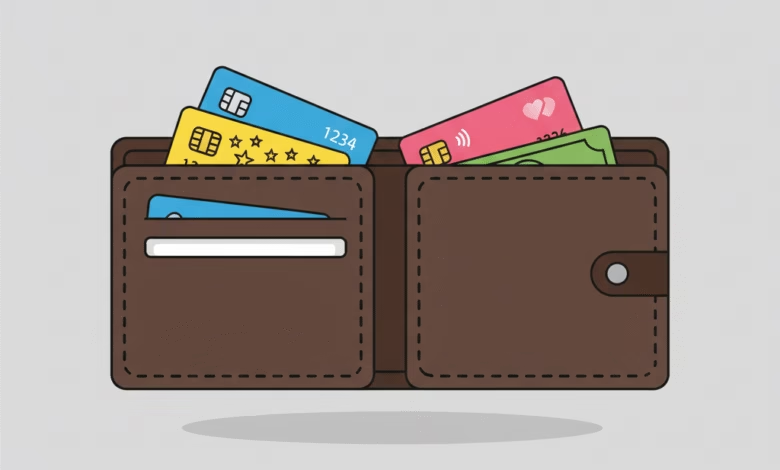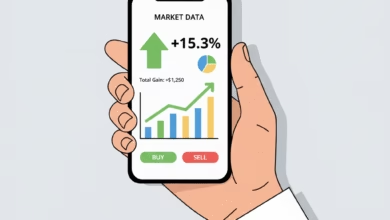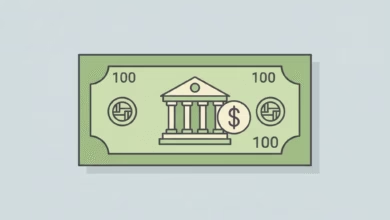How Interest Rates Affect Loan Approvals and Payments
Learn how interest rates affect loan approvals

You’ve seen the headlines: “The Fed Raises Rates Again” or “Interest Rates Hit a New High.” It can feel like distant, high-level economic news, but the reality is that those decisions have a direct and powerful impact on your wallet. They can determine the size of your monthly car payment, the affordability of your dream home, and even whether you get approved for a loan in the first place.
Understanding the role of interest rates is like learning the rules of the game for personal finance. It transforms you from a passive spectator into a strategic player who can anticipate changes, save money, and make smarter borrowing decisions.
This in-depth guide will demystify the world of interest rates. We’ll break down exactly what they are, who controls them, and how their movements can drastically alter your ability to borrow money and the total cost of that debt.
What Exactly Is an Interest Rate and Who Decides It?

At its core, an interest rate is simply the cost of borrowing money. Think of it as a rental fee. When you take out a loan, you’re “renting” a lender’s money, and the interest is the fee you pay for that privilege, typically expressed as an annual percentage of the loan amount.
But where does this rate come from? While many factors are at play, the primary driver in the U.S. economy is the Federal Reserve, often called “the Fed.”
The Role of the Federal Reserve
The Fed is the central bank of the United States. One of its main jobs is to manage the country’s monetary policy to achieve two goals: maximum employment and stable prices (which means keeping inflation in check). Its most powerful tool for this is the federal funds rate.
This is the interest rate that banks charge each other for overnight loans to meet their reserve requirements. While you will never personally pay the federal funds rate, it serves as the foundational benchmark for almost all other interest rates in the economy.
The Ripple Effect: From the Fed to You
When the Fed raises or lowers the federal funds rate, it creates a ripple effect:
- The Prime Rate: The federal funds rate directly influences the prime rate. This is the interest rate that commercial banks offer to their most creditworthy corporate customers. It typically runs about 3% above the federal funds rate.
- Consumer Loan Rates: The prime rate is the benchmark used to set the rates for many consumer lending products. When the prime rate goes up, the interest rates on credit cards, home equity lines of credit (HELOCs), and some personal loans often go up within a month or two. While rates for mortgages and auto loans aren’t directly tied to the prime rate, they are heavily influenced by the same economic conditions and tend to move in the same direction.
How Do Rising Interest Rates Impact Your Chances of Loan Approval?
This is one of the most overlooked consequences of a high-rate environment. You could have the exact same income and credit score, apply for the exact same loan amount, and get approved in January but denied in August. Why? The answer lies in your Debt-to-Income (DTI) ratio.
Your DTI ratio is a critical metric that lenders use to assess your ability to manage monthly payments and repay debts. It’s calculated by dividing your total monthly debt payments by your gross monthly income. Most lenders, especially for mortgages, want to see a DTI ratio no higher than 43%.
Here’s how rising interest rates throw a wrench in the DTI calculation.
Let’s look at a simplified example for a $350,000 mortgage:
- Gross Monthly Income: $8,000
- Other Monthly Debts (Car, Credit Cards): $700
Scenario 1: Low-Interest-Rate Environment
- Interest Rate: 4.5%
- Monthly Mortgage Payment (Principal & Interest): $1,773
- Total Monthly Debts: $1,773 (mortgage) + $700 (other) = $2,473
- DTI Calculation: ($2,473 / $8,000) = 30.9%
- Result: This DTI is well below the 43% threshold. Approval is likely.
Scenario 2: High-Interest-Rate Environment
- Interest Rate: 7.0%
- Monthly Mortgage Payment (Principal & Interest): $2,328
- Total Monthly Debts: $2,328 (mortgage) + $700 (other) = $3,028
- DTI Calculation: ($3,028 / $8,000) = 37.8%
- Result: The DTI is still under 43%, but it’s much tighter.
Now, imagine the borrower’s other debts were $1,200. In the low-rate scenario, their DTI would be 37%. In the high-rate scenario, it jumps to 44%—pushing them over the limit and potentially leading to a denial. The only thing that changed was the interest rate.
Higher rates directly increase the projected monthly payment for any new loan, which can inflate your DTI and make you appear riskier to lenders, thus lowering your odds of approval.
Fixed vs. Variable Rates: How Do Rate Changes Affect Your Monthly Payments?

The impact of interest rate changes on your monthly budget depends entirely on the type of loans you have.
Fixed-Rate Loans: Your Shield Against Volatility
If you have a fixed-rate loan, you are largely protected from rising interest rates. This includes:
- Fixed-rate mortgages (e.g., a 30-year or 15-year fixed)
- Most auto loans
- Most personal loans
- Federal student loans
With these products, the interest rate is locked in for the entire life of the loan. Your principal and interest payment will never change, regardless of what the Fed does. This provides predictability and stability for your budget.
Variable-Rate Loans: Directly Exposed to Changes
Variable-rate loans are a different story. Their interest rates are tied to a benchmark index, like the prime rate. When that index goes up or down, your loan’s interest rate adjusts accordingly. Products with variable rates include:
- Credit Cards: This is the most common type. If the Fed raises rates by 0.50%, you can expect the APR on your credit card to increase by the same amount within a billing cycle or two.
- Home Equity Lines of Credit (HELOCs): These are almost always variable-rate, making them sensitive to Fed policy.
- Adjustable-Rate Mortgages (ARMs): These have an initial fixed-rate period, after which the rate adjusts periodically (e.g., once per year).
For these loans, a rising rate environment means your minimum monthly payment will increase, and a larger portion of your payment will go toward interest rather than paying down the principal. This makes it more expensive to carry a balance and can prolong your debt repayment journey.
Strategies for Borrowers in Any Interest Rate Environment
Whether rates are high or low, you can take proactive steps to position yourself for the best possible loan terms.
- Boost Your Credit Score: Your personal credit history is a major factor in the rate you’re offered. A higher credit score signals to lenders that you are a low-risk borrower, and they will reward you with a lower interest rate. Paying bills on time, keeping credit card balances low, and avoiding unnecessary new credit applications are key.
- Lower Your DTI Ratio: Before applying for a major loan like a mortgage, focus on paying down other debts, such as credit card balances or car loans. A lower DTI gives you more breathing room and makes you a stronger applicant.
- Shop Around Aggressively: The interest rate one lender offers you can be significantly different from another. Always get quotes from multiple lenders—including national banks, local credit unions, and online lenders—to ensure you are getting the most competitive rate available to you.
- Consider the Loan Term: For mortgages and auto loans, shorter terms (like a 15-year mortgage or a 48-month auto loan) typically come with lower interest rates than longer terms. While the monthly payment will be higher, you’ll pay much less in total interest.
Frequently Asked Questions About Interest Rates and Loans

Q: Does the Fed’s interest rate directly change my existing fixed mortgage rate?
A: No. A fixed-rate mortgage is locked in. The Fed’s actions do not and cannot change the terms of your existing fixed-rate contract. They only affect the rates offered for new mortgages.
Q: Why did my credit card interest rate go up if I’ve never missed a payment?
A: Because most credit card agreements have a variable APR tied to the prime rate. When the Federal Reserve raises its benchmark rate, the prime rate goes up, and your credit card issuer passes that increase along to you automatically, as per your cardholder agreement.
Q: If interest rates are high, should I wait to buy a house or a car?
A: It depends. While a lower rate is always better, personal circumstances are more important. If you need a car or are financially ready to buy a home, waiting may not be an option. The strategy in a high-rate environment is to be an even stronger applicant (higher credit score, lower DTI) to secure the best possible rate. For mortgages, you can always look to refinance in the future if and when rates come down.
Q: What happens to my loans when interest rates go down?
A: For fixed-rate loans, nothing happens automatically. You would need to proactively refinance your mortgage or other loans to take advantage of the lower rates. For variable-rate loans, your interest rate and minimum payment should decrease, providing a welcome relief to your budget.
Ultimately, interest rates are the heartbeat of the economy. By understanding their rhythm, you can better navigate the lending landscape, save money, and make financial decisions with confidence, no matter which way the rates are trending.





